Attila The Hun: The Destroyer Of Rome Among Most Fearsome Enemies The Empire Ever Faced
David Tee - AncientPages.com - Many brilliant leaders serve their countries well but live their lives and careers in obscurity. Thus, they achieve little. They may be in the right place or time but not both.
Attila the Hun, who ruled 434-453 AD, was fortunate as he lived in the right place and at the right time. He was given an excellent opportunity to break the hold of the Romans over the many different nations they conquered and controlled.
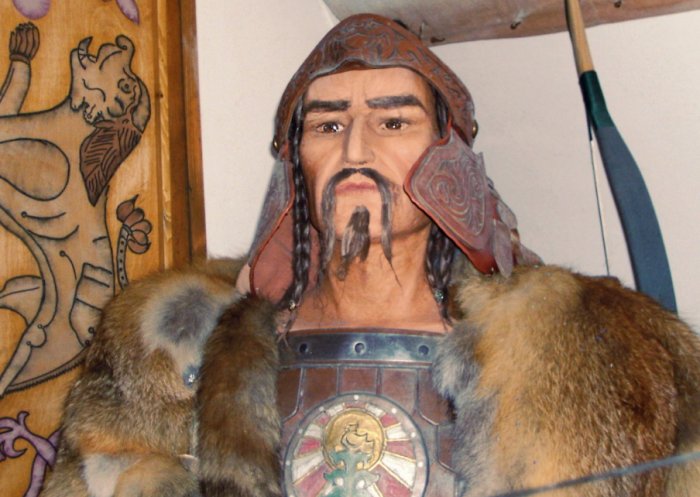 The figure of Attila in a museum in Hungary. (Wikimedia Commons)
The figure of Attila in a museum in Hungary. (Wikimedia Commons)
During his youth, his training seemed to prepare him for those moments of glory he would eventually achieve. He was an excellent archer and horse rider. With his warrior skills, he could create a vast army willing to die for his objectives.
Attila Came From The Unknown
It seems strange that such a famous warrior and conqueror has little information about him and his people. The date and place of his birth have been hidden by history, as has the language of his people. No one knows what language the Huns spoke.
Any evidence for their language only comes from people's names, which have various nationalistic origins. Another unknown piece of the puzzle comes from the fact that Attila is not his real name.
On top of that, the origin of the Huns is unknown. Their appearance on the European landscape seems to be one of mystery. The historian Gibbon has suggested that the Huns were part of the Xiongnu tribe, which was defeated earlier by Chinese Imperial armed forces. It is also argued that this tribe was forced to migrate and eventually became the Huns.
Two Brothers Attila And Bleda Were Joint Rulers
It was the death of his uncle Rugila (a ruler who was a significant factor in the Huns' early victories over the Roman Empire) that opened the path of power to Attila. Rugila was his uncle, but he was unsure if he had any sons to replace him. What is known is that both Attila and his brother Bleda were given the positions of joint rulers.
Attila and his brother were not men of character and often broke their word and treaties.
Upon ascension to power, the brothers worked with the Romans, and the Huns were paid as mercenaries to help defend the Roman borders. At the Treaty of Margus (443 AD), though, the Romans began to pay the Huns to keep them from invading their territory.
When the Treaty was signed, the Romans moved most of their troops to fight the Vandals on the western boundaries. It left the Huns vulnerable and tempting as Roman soldiers no longer guarded the Eastern borders.
Bleda died at approx. 445 AD, but it is unknown how he died or if Attila grew tired of joint rule and took the throne for himself.
Attila Used Religion To Keep Control Over People
It is without a doubt that religion holds significant influence over the general public. What religious people believe can be used to manipulate them into behaving in very non-religious ways. Attila seemed to have known this and used religion to keep his people under control.
He often claimed that he held the 'divine sword' and was destined to be the ruler of the known world. Attila probably used the religious beliefs of his people to help train them to be excellent guerrilla fighters. Their hit-and-run strategies made it almost impossible for the Romans to defeat.
It wasn't till the Roman general Aetius put together a coalition army of Visigoths, Vandals, and Romans that Attila suffered a defeat at the hands of his former Roman friends.
Attila Was Defeated But Not Conquered
However, the bloodiest battle in human history did not top Atilla or the Huns. They recovered from their defeat and returned to devastate Italy a year later. Attila never reached Rome as his army stopped at the River Po due to a lack of supplies.
The army soon returned to their homeland, where Attila died celebrating a marriage. His sons were not as capable of holding the empire together, and the Huns soon departed from history.
Written by – David Tee AncientPages.com Staff Writer
Updated on December 10, 2022
Copyright © AncientPages.com All rights reserved. This material may not be published, broadcast, rewritten or redistributed in whole or part without the express written permission of AncientPages.com
Expand for referencesMore From Ancient Pages
-
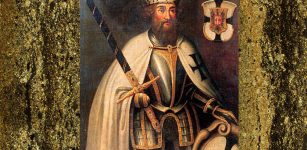 Ancient Road Used By The Teutonic Knights Discovered In A Lake In Poland
Archaeology | Nov 8, 2021
Ancient Road Used By The Teutonic Knights Discovered In A Lake In Poland
Archaeology | Nov 8, 2021 -
 Beautiful Ancient Egyptian Jewelry From The 26th Dynasty Unearthed At Karnak Temples
Artifacts | Mar 3, 2025
Beautiful Ancient Egyptian Jewelry From The 26th Dynasty Unearthed At Karnak Temples
Artifacts | Mar 3, 2025 -
 Archaeologists Discover Over 100 Ancient Settlements North Of Hadrian’s Wall
Archaeology | May 26, 2022
Archaeologists Discover Over 100 Ancient Settlements North Of Hadrian’s Wall
Archaeology | May 26, 2022 -
 Hundreds Of Exceptional Bronze Age Artifacts Discovered In France Were Probably Offerings
Archaeology | Aug 28, 2021
Hundreds Of Exceptional Bronze Age Artifacts Discovered In France Were Probably Offerings
Archaeology | Aug 28, 2021 -
 What Did Bronze Age People Do With All That Bronze?
Featured Stories | Aug 5, 2024
What Did Bronze Age People Do With All That Bronze?
Featured Stories | Aug 5, 2024 -
 Ashvins: Vedic Twin Gods Of Medicine And Healing Were Skilled Surgeons
Featured Stories | Feb 1, 2019
Ashvins: Vedic Twin Gods Of Medicine And Healing Were Skilled Surgeons
Featured Stories | Feb 1, 2019 -
 On This Day In History: Alexander The Great Defeats Darius III Of Persia In The Battle Of The Granicus On May 22, 334 B.C.
News | May 22, 2016
On This Day In History: Alexander The Great Defeats Darius III Of Persia In The Battle Of The Granicus On May 22, 334 B.C.
News | May 22, 2016 -
 5,000-Year-Old Underground Partly Submerged City Discovered In Turkey’s Cappadocia
Archaeology | Jun 10, 2019
5,000-Year-Old Underground Partly Submerged City Discovered In Turkey’s Cappadocia
Archaeology | Jun 10, 2019 -
 Neanderthals Painted Andalusia’s Cueva de Ardales – New Study Confirms Their Cave Art
Archaeology | Aug 3, 2021
Neanderthals Painted Andalusia’s Cueva de Ardales – New Study Confirms Their Cave Art
Archaeology | Aug 3, 2021 -
 65 Byzantine-Era Tombs Unearthed In Stratonikeia – World’s Largest Marble City
Archaeology | Feb 24, 2017
65 Byzantine-Era Tombs Unearthed In Stratonikeia – World’s Largest Marble City
Archaeology | Feb 24, 2017 -
 Ice Age Teens Experienced Puberty Stages Similar To Modern Adolescents, Study Reveals
Archaeology | Sep 13, 2024
Ice Age Teens Experienced Puberty Stages Similar To Modern Adolescents, Study Reveals
Archaeology | Sep 13, 2024 -
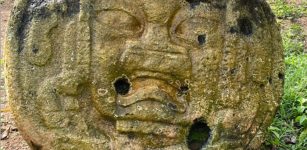 Two Huge Olmec Reliefs Recovered After Anonymous Tip
Archaeology | Aug 9, 2022
Two Huge Olmec Reliefs Recovered After Anonymous Tip
Archaeology | Aug 9, 2022 -
 Amazon Forest Communities Disappeared Long Before 1492 Arrival Of Europeans
Archaeology | Jun 19, 2019
Amazon Forest Communities Disappeared Long Before 1492 Arrival Of Europeans
Archaeology | Jun 19, 2019 -
 LIDAR Discovers Mysterious Maya Underground Chamber In The Rainforest
Archaeology | Jul 22, 2024
LIDAR Discovers Mysterious Maya Underground Chamber In The Rainforest
Archaeology | Jul 22, 2024 -
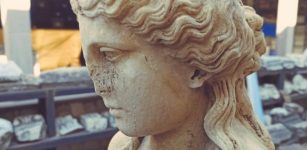 1,800-Year-Old Statue Of A Water Nymph Found Underground In The Ancient City Of Amastris
Archaeology | Sep 8, 2023
1,800-Year-Old Statue Of A Water Nymph Found Underground In The Ancient City Of Amastris
Archaeology | Sep 8, 2023 -
 Tomb Of A 1,000-Year-Old Sican Surgeon Wearing A Golden Mask Discovered In Peru
Archaeology | Mar 30, 2022
Tomb Of A 1,000-Year-Old Sican Surgeon Wearing A Golden Mask Discovered In Peru
Archaeology | Mar 30, 2022 -
 Nilometer: Innovative Tool Measuring The Nile’s Water Levels In Pharaonic Egypt
Featured Stories | Jun 1, 2024
Nilometer: Innovative Tool Measuring The Nile’s Water Levels In Pharaonic Egypt
Featured Stories | Jun 1, 2024 -
 Brutus Of Troy: First King Of Britain Or Just A Myth?
Featured Stories | Feb 16, 2016
Brutus Of Troy: First King Of Britain Or Just A Myth?
Featured Stories | Feb 16, 2016 -
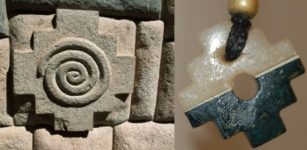 Mysterious Chakana – Sacred Inca Cross And Its Connection To The Southern Cross Constellation
Ancient Symbols | Sep 15, 2018
Mysterious Chakana – Sacred Inca Cross And Its Connection To The Southern Cross Constellation
Ancient Symbols | Sep 15, 2018 -
 Angkor Wat: Pre-Industrial City’s Downfall And Climate Change
Archaeology | Apr 18, 2020
Angkor Wat: Pre-Industrial City’s Downfall And Climate Change
Archaeology | Apr 18, 2020

